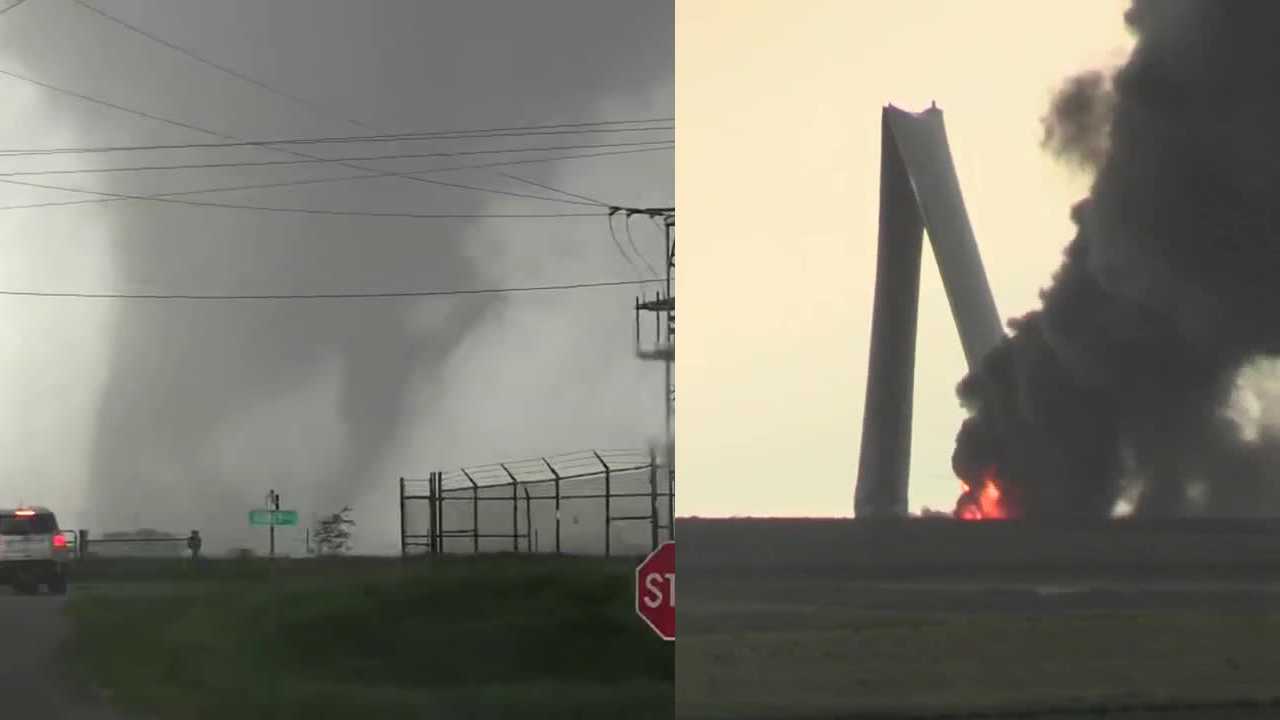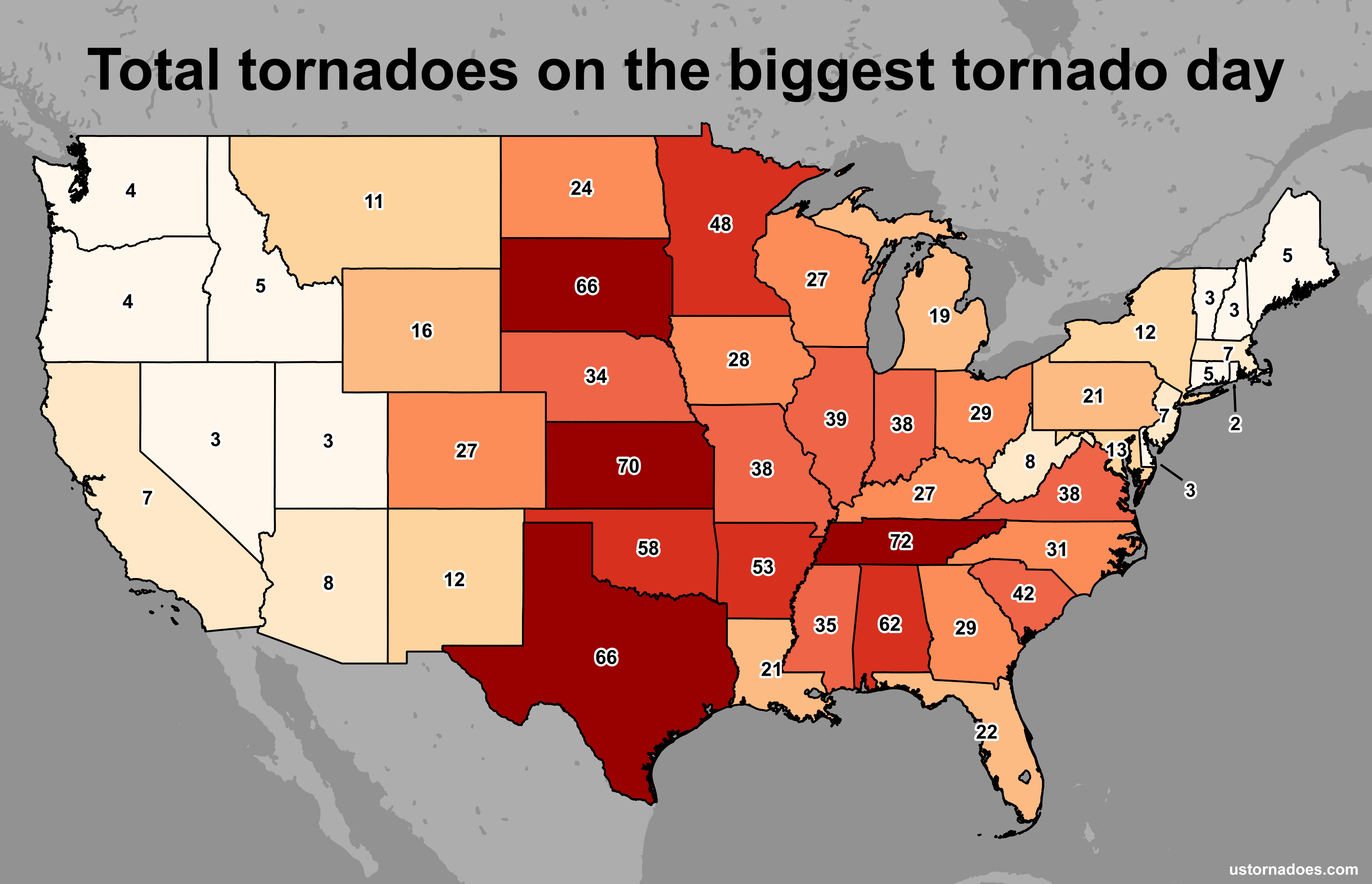Tornado in Iowa Today
Tornado in iowa today – A powerful tornado touched down in Iowa today, leaving a trail of destruction in its wake. The tornado, which was rated EF-3 on the Enhanced Fujita Scale, struck the town of Dexter around 4:30 p.m. CDT.
Impact of the Tornado
The tornado caused widespread damage to the town, destroying several homes and businesses. The tornado also uprooted trees, downed power lines, and left many residents without electricity. Several people were injured in the tornado, but no fatalities have been reported.
Response to the Tornado
Emergency crews are currently on the scene, assisting with cleanup and recovery efforts. The Red Cross has set up a shelter for those who have been displaced by the tornado. The National Weather Service is urging residents to stay away from the affected area as crews work to clear debris and restore power.
Historical Context

Iowa has a long and well-documented history of tornadoes. The state is located in the middle of Tornado Alley, a region of the central United States that experiences a high frequency of tornadoes each year. Iowa typically experiences around 50 tornadoes per year, more than any other state in the country.
The intensity of tornadoes in Iowa can vary greatly. The majority of tornadoes are weak, with wind speeds of less than 110 mph. However, stronger tornadoes can occur, and Iowa has experienced some of the most powerful tornadoes on record. In 2004, an F5 tornado struck Parkersburg, Iowa, causing widespread damage and killing six people.
Notable Tornadoes in Iowa
- 1844: The Iowa City Tornado – This F4 tornado struck Iowa City on May 28, 1844, killing six people and destroying much of the city.
- 1968: The Parkersburg Tornado – This F5 tornado struck Parkersburg on May 13, 1968, killing six people and causing widespread damage.
- 2004: The Grinnell Tornado – This F4 tornado struck Grinnell on June 7, 2004, injuring 14 people and causing extensive damage to the city.
- 2011: The Parkersburg Tornado – This F5 tornado struck Parkersburg again on May 25, 2011, killing one person and causing significant damage to the city.
Meteorological Factors

The genesis of today’s tornado in Iowa can be traced to a confluence of meteorological elements that fostered its development. These elements, acting in concert, created an environment ripe for tornadogenesis.
At the heart of tornado formation lies the interplay of three crucial ingredients: wind shear, instability, and moisture. Wind shear refers to the variation in wind speed and direction with altitude. This variation creates a rotating effect that can stretch and intensify updrafts, providing the vertical momentum necessary for tornado development.
Instability, Tornado in iowa today
Instability, on the other hand, measures the atmosphere’s tendency to rise. Warm, moist air near the surface and cooler, drier air aloft create an unstable environment where air parcels can rise rapidly, releasing latent heat and further fueling the storm.
Moisture
Moisture, the third essential ingredient, provides the raw material for cloud formation and precipitation. In the case of today’s tornado, ample moisture from the Gulf of Mexico streamed northward, providing the necessary fuel for the storm’s development.
The specific weather patterns that led to the tornado in Iowa today involved a potent low-pressure system that tracked across the Midwest. This low-pressure system brought together the necessary ingredients for tornado formation: strong wind shear, ample instability, and abundant moisture. As the low-pressure system moved through Iowa, it encountered a favorable environment for tornadogenesis, resulting in the formation of the tornado that has impacted the state today.
Safety and Preparedness
When tornadoes threaten, safety should be the utmost priority. Having a well-defined emergency plan and understanding safety measures can significantly increase your chances of staying safe during these unpredictable events.
Emergency plans should Artikel evacuation routes, designated safe areas within your home or building, and communication strategies for family members. Knowing what to do in advance can minimize confusion and panic during a tornado warning.
Early Warning Systems
Early warning systems play a crucial role in tornado preparedness. These systems provide timely alerts, giving individuals valuable lead time to seek shelter and take necessary safety precautions.
- Weather forecasts and advisories should be closely monitored, especially during severe weather seasons.
- NOAA Weather Radio is a reliable source of real-time weather updates and tornado warnings.
- Mobile weather apps can provide location-specific alerts and tracking of approaching storms.
Recovery and Response

In the aftermath of the devastating tornado that struck Iowa, a swift and coordinated response was mounted to address the immediate needs of those affected and to begin the long-term recovery process.
Emergency responders, including firefighters, police officers, and paramedics, were on the scene within minutes of the tornado’s passing. They worked tirelessly to rescue trapped individuals, provide medical assistance, and secure the affected areas.
Role of Volunteers and Community Organizations
Alongside the emergency responders, volunteers and community organizations played a crucial role in the recovery efforts. They provided food, clothing, and shelter to those who had lost their homes, and assisted with cleanup and debris removal.
- Local churches and community centers opened their doors as shelters, providing a safe haven for displaced families.
- Volunteers from neighboring communities came together to assist with cleanup efforts, removing debris and restoring damaged properties.
- Nonprofit organizations provided financial assistance, counseling services, and other forms of support to those affected by the tornado.
Resources and Assistance
The Iowa Department of Human Services and the Federal Emergency Management Agency (FEMA) have made available a range of resources and assistance programs to those impacted by the tornado.
- Financial assistance is available to cover temporary housing, repairs, and other essential expenses.
- Counseling services are provided to help individuals cope with the emotional trauma of the tornado.
- Disaster recovery centers have been established to provide information and guidance on available assistance programs.
Climate Change and Tornadoes
Tornadoes are a destructive force of nature, and climate change may be making them more frequent and intense. The latest scientific research suggests that climate change is leading to an increase in the number of days with favorable conditions for tornado formation, as well as an increase in the intensity of tornadoes. This is due to a number of factors, including rising temperatures, changes in precipitation patterns, and more frequent extreme weather events.
Implications for Tornado Preparedness and Response
The implications of climate change for tornado preparedness and response are significant. As tornadoes become more frequent and intense, it is important to be prepared for the possibility of a tornado striking your community. This includes having a plan in place for what to do if a tornado warning is issued, as well as having an emergency kit ready. It is also important to be aware of the signs of a tornado, such as a rotating funnel cloud or debris swirling in the air.
If you see a tornado, take shelter immediately. The best place to shelter from a tornado is in a sturdy building, below ground level. If you are in a mobile home, you should evacuate immediately and seek shelter in a sturdy building.
After a tornado has passed, it is important to be aware of the dangers of downed power lines and other hazards. You should also be aware of the possibility of flooding, as tornadoes can often produce heavy rains.